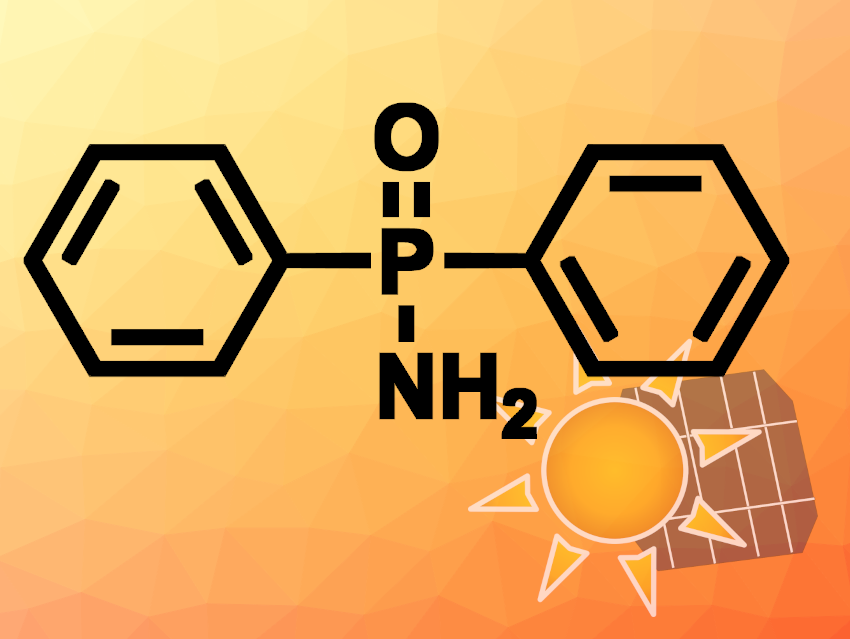Organic-inorganic hybrid perovskite materials can be used to build solar cells with high photovoltaic performance. Perovskite films can also be used to create flexible perovskite solar cells (f-PSCs). However, their practical use requires good mechanical stability. To improve the mechanical properties of flexible devices, a variety of organic and inorganic compounds have been used to try and improve crystal packing, reduce lattice strain, and prevent fracture at the interface between the perovskite and the neighboring layer. The bulk of the active layer also needs to be mechanically robust. Existing methods for doping the bulk phase can be complicated, and simple molecules that improve the mechanical stability of f-PSCs would be useful.
Qunwei Tang, Shandong University of Science and Technology, Qingdao, China, and colleagues have used diphenylphosphinamide (DPPA, pictured) as an additive for perovskite films, which were then employed to fabricate f-PSCs. DPPA contains a phosphine oxide unit and an amino group, which can interact with exposed Pb2+ ions in the perovskite (via coordination) and halide ions (via hydrogen bonds), respectively. The team found that introducing DPPA into the perovskite improved the crystallinity and minimized grain boundaries, raising the overall quality of the perovskite film. The additive decreased tensile strain in the material and improved its mechanical robustness.
The f-PSC the researchers fabricated using DPPA achieved a high efficiency of 20.46 %. A flexible device with a DPPA additive showed improved stability and efficiency retention when bent compared with a control solar cell with DPPA. Compared to a control device, the DPPA-containing perovskite films show less pronounced cracks after bending, which helps to retain charge transport and, thus, device performance. According to the researchers, the work could be helpful for the development of more reliable and durable solar energy solutions.
- A multifunctional phenylphosphinamide additive for stable flexible inverted perovskite solar cells,
Feihu Liu, Jidong Geng, Wei Zhang, Jie Dou, Qiyao Guo, Jialong Duan, Qunwei Tang,
Chem. Commun. 2024.
https://doi.org/10.1039/D4CC03491K



